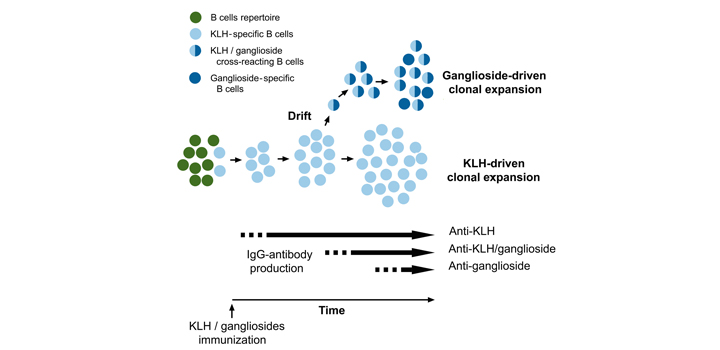Funes SC et al, Biochim. Biophys. Acta, 2017
An experimental model of Guillain-Barré Syndrome has been established in recent years. Rabbits develop disease upon immunization with a single dose of an emulsion containing bovine brain gangliosides, KLH and complete Freund’s adjuvant. Within a period of four to ten weeks after immunization, they began to produce anti-ganglioside IgG-antibodies first, and to show clinical signs of neuropathy afterwards. In addition to gangliosides, KLH is a requirement for antibody production and disease triggering. Although KLH is commonly used as an immunological carrier protein, an anti-KLH-specific immune response was necessary for induction of both events. KLH is a glycoprotein carrying most of the immunogenicity in its glycan moiety. Between 20% to 80% of anti-ganglioside IgG-antibodies present in sick rabbit sera cross-reacted with KLH, indicating that both immune responses are related. The terminal Gal-ß(1,3)-GalNAc glycan (present in gangliosides and KLH) is proposed as “key” antigenic determinant involved in inducing the anti-ganglioside immune response. These results are discussed in the context of the “binding site drift” hypothesis.
Authors: Funes SC, Chiari ME, R Comín, Irazoqui FJ, Nores GA.



